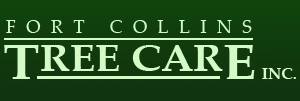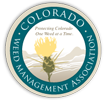
Tree Planting for Pollinators in Fort Collins
Trees, Shrubs, and Pollinators
Over the last decade, there has been an increasing amount of stress factors placed on the pollinator population. As a result, this has led to a growing concern regarding the health of our pollinators. Birds, bees, beetles, bats, flies, and moths are all examples of native pollinator species in our ecosystem. Pollinators play a vital role in the production of roughly 1/3 of consumable foods, at estimated annual production costs of $40 billion. As homeowners and plant health care professionals, it is vital that we do everything we can to help promote and preserve this essential resource. One of the most important and easiest ways to do this is by incorporating pollinator habitats into our own landscapes.
What is a Pollinator Habitat?
Like all living things, pollinators require food and shelter to facilitate their survival. A healthy pollinator habitat is an area in which pollinators have adequate access to food, water, and safe nesting areas. By selecting pollinator positive plants, we can not only create a better living condition for pollinators, but increase the overall pollen availability as well.
Pollinator Plant Selection
When considering planting for pollinators it is important to consider the foraging cycles of pollinators in relation to the bloom timing of the desired plants. A variety of pollinators begin emerging in late winter and will continue to forage all the way into late fall. Because of this, it is important to select a variety of trees and shrubs that have off-setting bloom times to provide a localized pollen source throughout the year. When planning for the ideal pollinator habitat, it is recommended that a minimum of three pollen producing plants be maintained for each third of the growing season; three spring plants, three summer plants, and three late summer/fall plants.
In addition to bloom time, it is also important to take into consideration bloom density and planting location. In order to collect pollen, pollinators must first travel from bloom to bloom. In an attempt to conserve as much energy as possible, pollinators are more likely to visit locations and plants that offer a higher quantity of pollen within a shorter travel distance.
For a list of recommended plants, please reference the "Low Water Native Plants for Pollinators" document provided by the Colorado Native Plant Society.
Maintaining a Healthy Pollinator Habitat
Once you have selected and installed your desired plants, it is important that the plants are given the proper care to promote optimal bloom and pollen production. In most instances, this will include a care program which includes both proper pruning practices and pest management. When pruning pollinating plants, it is always best to wait until after pedal drop has fully concluded. Pruning before this time will decrease the amount of available pollen and in some cases can make plants more susceptible to disease.
Pest management is another resource to be used to promote plant health and pollinator vigor. However when considering pest management, it is important to review when and how pesticides will be used. Some pesticides can be transmitted through pollen and negatively impact the pollinator populations we are trying to promote. If doing home applications on pollinator plants, it is critical to review all labeling before application to properly understand how the product will affect local pollinators. As always, if you have questions about pesticides or pollinators contact a plant health professional who is licensed and experienced in pesticide applications.
For any questions or needs regarding the planting, pruning, or care of pollinating plants in your yard contact Fort Collins Tree Care at
Phone: (970) 484-3084
Email: fctreecare@cs.com
Website: http://fctreecare.com
Resources
Galea, Mary. (2016, May). Creating Habitat for Pollinators, TCIA Magazine, Volume XXVII, Number 5, 64-67.
Arathi, H.S. “Creating Pollinator Habitat - 5.616.” Extension, extension.colostate.edu/topic-areas/insects/creating-pollinator-habitat-5-616/.





